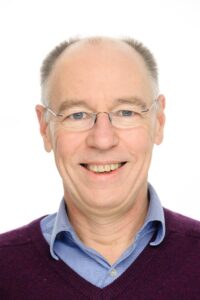For our second meeting of 2025 we are pleased to have Professor Simon Jeffery of Armagh Observatory along to give us his lecture titled ‘SALT, Stellar Mergers and Super-Hot Zombie Stars’. This lecture will take place on Monday 3rd February at 8pm sharp. This will be held in our usual venue of Ballyclare High School Lecture Theatre.

About the talk:
We have used the Southern African Large Telescope to carry out a survey of chemically-peculiar faint blue stars — the majority of which lack surface hydrogen. Out of more than 600 stars, most appear to have been produced in the collision of two white dwarf stars. But there are also many exceptional and exotic stars, A few are extremely hot with surface temperatures of over 100,000 degrees, including four record-breakers: the hottest DO white dwarf, the two hottest GW Vir stars, and the hottest `naked’ O(H) star. Some are extremely magnetic. The heavy-metal stars are super-rich in elements such as lead and zirconium. There are exotic double stars as well. My talk will describe the background to the survey, the observations being carried out with SALT and some of the new discoveries. It will attempt to explain how these stars fit into the big picture of how stars approach their final fate and how some are – indeed – dead stars reborn.
About Simon:
Simon’s astronomical life started at the Royal Observatory, Edinburgh, and has taken him via a Physics degree at Imperial College, London, to St Andrews, Scotland and Kiel, Germany, before finally moving to the Armagh Observatory and Planetarium in Northern Ireland, where he works as a senior research astronomer. He has held positions as adjunct Professor of Physics at Trinity College Dublin and a Visiting Byfellowship at Churchill College, Cambridge. He is a past president of IAU Commission G4 on Pulsating Stars and is currently president of IAU Commission G5 on Stellar and Planetary Atmospheres.
Pursuing a lifelong interest in how stars work and how they vary over time, Simon’s PhD in theoretical stellar structure and evolution was followed by observational and theoretical work on stellar pulsations and atmospheres. Most stars never fully exhaust their initial hydrogen store, but retain a hydrogen surface to the very end. However, in rare and extreme cases, some stars become true ‘helium’ stars. Simon’s goal is to demonstrate their elusive origins. The surprising conclusion is that the great majority appear to have formed from the merger of two very old and faint stars … a double white dwarf. His favourite is the pulsating V652 Herculis — the ‘born-again rocket star’.
Simon would like to spend more time dinghy racing, sings baritone, and hunts wild life and seascapes with a camera.
Throughout the NIAAS history we have always endeavoured to make our February lecture a little bit special. Previously known as our memorial meeting, and keeping in this spirit, I think you will agree that this lecture promises to be just that!
I’m sure you will join me in welcoming Simon to our society and as usual, refreshments and good chat are available after the meeting!
